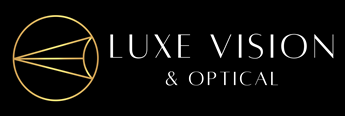 Myopia, commonly known as nearsightedness, is a condition that affects millions of people worldwide. While environmental factors such as excessive screen time and lack of outdoor activities have been linked to its development, genetics also play a crucial role. In this blog, we delve into the fascinating world of myopia genetics and explore how identifying myopia-risk genes and the potential use of gene therapy can aid in managing this condition. Join us as we uncover the science behind myopia development and discover how genes shape the course of sight.
Myopia, commonly known as nearsightedness, is a condition that affects millions of people worldwide. While environmental factors such as excessive screen time and lack of outdoor activities have been linked to its development, genetics also play a crucial role. In this blog, we delve into the fascinating world of myopia genetics and explore how identifying myopia-risk genes and the potential use of gene therapy can aid in managing this condition. Join us as we uncover the science behind myopia development and discover how genes shape the course of sight.
What is Myopia?
Myopia, also known as nearsightedness, is a common eye condition that causes distant objects to appear blurry, while nearby objects remain clear. It occurs when the shape of the eye causes light rays to focus in front of the retina instead of directly on it. While environmental factors such as prolonged near work and reduced outdoor activities have been linked to myopia development, genetics also plays a crucial role in its occurrence. In this blog post, we'll discuss the critical role of genetics in myopia development and management.
Genetics and Myopia Development
Studies have shown that myopia has a strong genetic component, with up to 80% of the risk being attributed to genetics. Research has identified various genes associated with myopia, including those involved in eye growth and development, neurotransmitter signaling, and collagen synthesis. Children with nearsighted parents are at a higher risk of developing the condition, with the risk increasing as the number of affected family members increases.
Genetics and Myopia Management
Genetics plays a critical role in myopia development and management. Understanding the genetic basis of myopia can help identify individuals at risk of developing the condition and develop more personalized and effective treatments.
Although still undergoing testing and research, gene therapy is emerging as a promising avenue in the management of myopia. The approach involves modifying the genes responsible for myopia development, aiming to prevent or slow down its progression. While it's still in the experimental phase, gene therapy has shown great potential in managing myopia, especially for individuals who have not responded to traditional treatments.
Why is Myopia Management Important?
Managing myopia is crucial to safeguarding vision, health, and quality of life, especially in children. Myopia can lead to significant vision impairment and increase the risk of developing other eye conditions, such as cataracts, glaucoma, and retinal detachment. Moreover, severe myopia can limit an individual's career and life choices, impacting their overall well-being. Therefore, investing in myopia management is vital to ensure that your child's vision is protected, and they can enjoy life to the fullest.
Myopia Management in Powell
Myopia is a complex condition with both genetic and environmental factors contributing to its development. By understanding the genetic basis of myopia, we can develop more targeted treatments that offer better outcomes for patients. If your child has myopia or is at risk of developing it, contact Luxe Vision and Optical today to schedule their myopia consultation.
Our practice serves patients from Powell, Lewis Center, Delaware, and Columbus, Ohio and surrounding communities.

